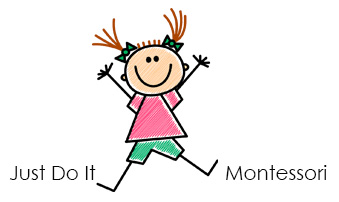

At Just Do It Montessori, it is our mission to provide the best possible education to nurture each child’s full potential to help our students grow into capable individuals, who will have a strong sense of self, the ability to connect with others, and the foundation to be productive throughout their entire lives. Our school encourages child-driven independence and motivation in order to equip our students with the skills and attitude to take on the world and thrive. Our students will grow up feeling empowered and safe in their abilities to make sound choices. When their teachers and parents trust them to be self-directed, they learn to trust themselves, ultimately becoming happy and productive members of society.
Students work in all classroom areas for long, uninterrupted stretches of the morning. This includes Practical Life, Sensorial materials, Math, Language, Science (Zoology and Botany), Geography, Culture and Art. Teachers support students to think and act independently even as they learn to explore the world around them at their own pace and in their own way. Every day has the potential to unlock new knowledge and introduce new skills a student will rely on for the rest of their life.


The students will participate daily in morning Gathering, in which they will explore the calendar, count, sing songs or participate in class discussions.
Curriculum is expansive and the teachers thoughtfully observe and create curricular projects around the children’s interests. Children can choose to be a part of these projects and revisit them over the course of days or weeks. Children have the opportunity to work independently, with a partner or in a small group, fine-tuning their skills of teamwork, collaboration, problem-solving and self-expression as they articulate their ideas through language and various materials in the classroom. Additional curriculum includes book-making, arts & crafts, sewing, cooking, science experiments, music and outdoor play.
Students who are of Transitional Kindergarten and Kindergarten age will participate in more structured activities, such as workbooks and more advanced academic lessons. Our school has the ability to keep children engaged, challenged and learning endlessly, so it is not possible for your child to outgrow our program until they reach first grade.




